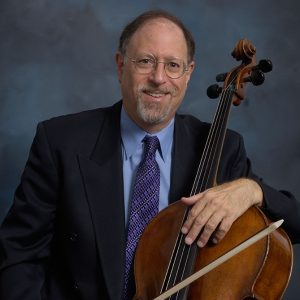
The Joy of Feuillard – A Sequential Approach to Teaching Bow Technique (Part 33 – Feuillard No. 36 – Variations #30-38)
Robert Jesselson
Today we will continue with Feuillard No. 36, Variations #30-#38. Most of these variations work on double stops with string crossings, and legato strokes involving the upper arm versus wrist/fingers over four strings.
Variation #30:

This Variation again involves both the Up-bow Staccato and Flying Spiccato strokes, which we have seen before dispersed throughout all the bowing exercises on these pages. It is one more opportunity to review the different ways of producing these two strokes – and George was able to verbalize the technical information required. Even though he had not practiced the Flying Spiccato as fast as I got him to play it here, it is always interesting to me that if one has absorbed the technique it is possible to speed up the tempos easily.
Variations #31-#33:



These variations are all double-stops in triplets, using three of the seven arm levels (C-G level, G-D level, and D-A level). One has to work carefully to get an even sound between the strings. I ask the students to play this in a forte dynamic to make sure that they can sustain the sound throughout. If there is a problem with endurance or any issues with pain then we would need to address those. I would help to make sure that the upper arm is being used correctly, that there are no “kinks” in the arm, that they are using the “front and back of the hand” correctly, and that they are releasing tension – among other possible issues. George did not have any of these problems – except that I had to remind him to keep his thumb round on the bow (so as not to squeeze) and to use the correct bow distribution. By this time he has worked through most of these issues, so all he needed was a gentle reminder – which we all need from time to time. In my own practicing I am constantly thinking about the most fundamental aspects of playing: bow angle, using the right parts of the arm for different strokes, front and back of the hand, etc, etc. As soon as we stop thinking about these things our technique can start to suffer and problems crop up in our playing.
I remember once turning on the radio in mid-performance of the big cello solo in the Brahms piano concerto #2. I didn’t know who was playing, but I could tell that it was a great cellist because he was shaping the phrases so beautifully. But the sound was not great – it was unfocused and inconsistent. It turned out to be a live performance with Frank Miller and the Chicago Symphony. It was at the end of his career, and I assume that there was some problem with his bow sliding up and down the string because his bow angle was not quite right, thus affecting the sound. Even our great cello heroes are human, and they can lose their intonation or sound if they stop paying attention to the basics.
For these variations I asked George to play just two beats per chord, rather than four. I sometimes ask the students to do this to see how easily they can adapt to a change in the way they practiced it, and to save time in the lesson if they have usually have no problem with concentration or focus.
Variations #34-#37:




These variations all involve string crossings over four strings. Variation #34 is a relatively simple arc with the upper arm using four of the seven arm levels. [We discussed the seven arm levels in an earlier Blog (Feuillard No. 35 Variations #42-51). The seven levels of the upper arm are: the levels for the four single strings, plus the three double-stops.]
In this video I asked George to tell me how many arm levels we are using, and where the wrist and fingers are involved. Variations #35-37 are all rather complex, and we need to figure out the best way to get from string to string. There are several possibilities for each one of these variations, depending on exactly where we are on the bow and what kind of sound we want. I had to remind George to use the full bow, and especially to use the wrist and fingers at several points. I did this non-verbally in order not to stop him, but just to remind him while playing.
This is all rather sophisticated French bow technique á la André Navarra and other great cellists of the Franco-Belgium School. The goal is to figure out the best use of the arm vs. wrist and fingers to achieve smooth string crossings without pressing the sound.
Variations #38:

This variation is again staccato, in the middle of the bow, with the upper arm doing the string crossings with four arm levels.
Next week will be the final blog in this series. We will finish all the rest of the variations in No. 36.
*If you have questions or comments about The Joy of Feuillard, Dr. Robert Jesselson can be reached directly at rjesselson@mozart.sc.edu.
Subjects: Repertoire, Technique
